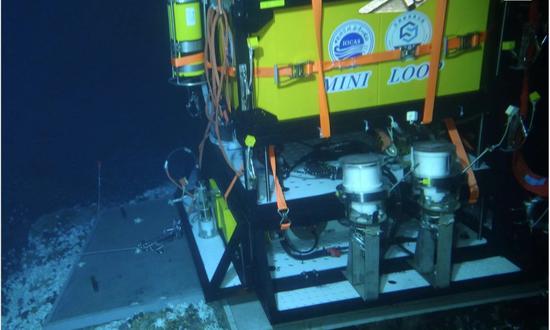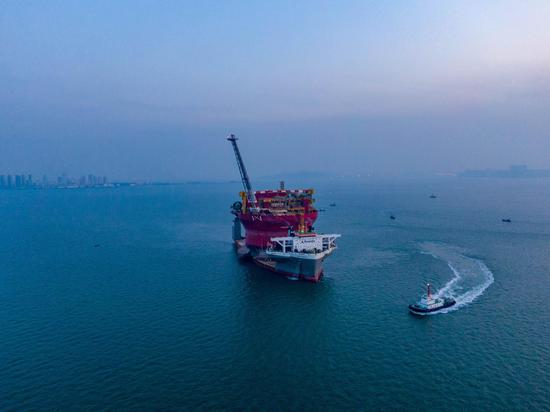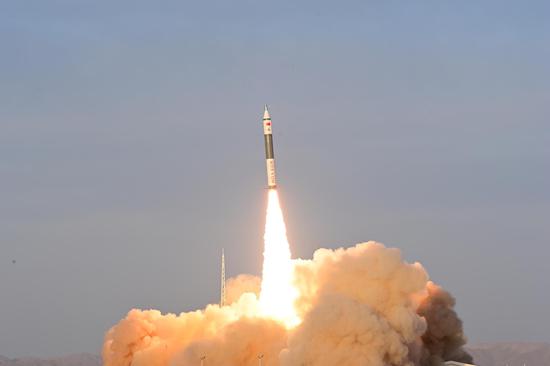
The lander-based deep-sea multi-channel Raman spectroscopy system conducts operation in the deep-sea cold seep. (Photo/Courtesy of Institute of Oceanology, Chinese Academy of Sciences)
Chinese scientists have successfully developed the first lander-based multi-channel Raman spectroscopy system, which can be mounted on the lander to form a deep-sea, in-situ spectroscopy lab in the South China Sea.
This lab is a step further in exploration for in-situ long-term experiments in extreme deep-sea environments, which can be used for study of the deep-sea marine ecology, global climate change and the origin of life, the project leader told the Global Times on Wednesday.
This project is led by Zhang Xin, a professor at the Qingdao-based Institute of Oceanology under the Chinese Academy of Sciences (CAS) in East China’s Shandong Province, which is the first ocean research institute in China.
Raman spectroscopy is an optical technique that detects intrinsic vibrational, rotational and other low-frequency modes in molecules upon inelastic scattering of monochromatic light.
The lander-based lab is an unmanned station, which is deployed in the seabed for scientists to carry out long-term and continuous regular research in the deep sea, to help us better understand how extreme environments like cold seep and hydrothermal vents affect the marine environment, Zhang told the Global Times.
“The concept of the lab was proposed in 2020. We want to introduce an in-situ lab that can work for a long term in deep-sea environments, as the previous deep-sea vehicles, such as ROV (remote operated vehicle) and HOV (human occupied vehicle), worked for a short term,” Zhang said.
His team worked on the project in 2021 and completed testing applications with deep-sea scientific research vessel Dongfanghong No.3 this year.
The lab can withstand deep-sea high pressure up to a depth of 4,500 meters, which means it can operate in most areas of the South China Sea, according to Zhang.
In the future, it could be deployed in deep-sea hydrothermal vents to study deep-sea hydrothermal sulfides and minerals, and these resources could be future strategic metal resources, said Zhang.
China has proposed the use of an in-situ scientific experiment station in recent years, which takes a deep-sea base station as the center, carrying unmanned submersibles, labs and other platforms to conduct in-situ experiments and exploration, according to the CAS in November.
Zhang said that this in-situ lab has worked in deep-sea cold seep areas of the South China Sea during the past three years, and the team will wait for peer review before publishing some of its other findings. The team published an article in the scientific journal Deep-Sea Research Part I this year.

















































 京公网安备 11010202009201号
京公网安备 11010202009201号